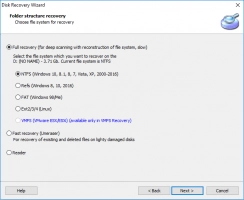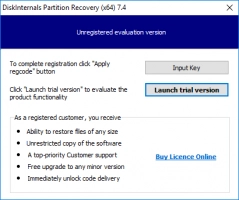[Solved!] Windows cannot be installed on this disk. The selected disk is of the GPT partition style
In this article you will find out:
- why does this error occur
- two ways to deal with this error
- how to protect your data
Are you ready? Let's read!
Why does this error occur?
When you install Windows 10, 8, or 7 on your PC or laptop, this error could annoy you. As a result, you won't be able to finish the eagerly anticipated operating system installation unless you identify a workable fix.

So what is the reason for the message "The selected disk is of the GPT partition style?"
First, let's understand the concept of GPT. This is the UEFI standard, so a UEFI-based system must be installed on a GPT disk. In general, the GPT partition style allows you to fully use disks larger than 2 TB, create an unlimited number of partitions on a disk, and be more versatile and secure.
So, during the installation of Windows, you have a choice of installation: using the MBR or GPT partition style. For the correct choice, you need to know which motherboard firmware you are using:
- if UEFI, then use GPT
- if an older BIOS, use MBR
Thus, if you see the message "Windows cannot be installed to this GPT disk", it means that you have UEFI firmware installed, but your hard drive is not configured for this firmware.
Two ways to deal with this error
And here are the solutions to the problem:
1. Convert MBR to GPT partition style
2. Then use MBR style, but restart the computer in legacy BIOS mode
Solution 1: Force delete
You will need to manually erase the disk and convert it to GPT. Erasing a disk means formatting it and removing all its contents. Thus, if valuable information is recorded on the disk, you must first make a backup copy or disk image, etc. using DiskInternals Partition Recovery. Then start the style conversion process.
Insert the Windows installation DVD or USB and start booting. Once the Windows installation window appears, press Shift + F10. Thus, you will be taken to the command line. Now, in order, slowly enter the commands:
diskpart
disk list
select disk (disk number)
clean
convert gpt
Exit
After converting, the disk will be displayed as unallocated space. Select this space and click Next to continue with a successful installation.
Solution 2: Boot to UEFI Mode
This solution is more suitable for Windows 10 owners, since their motherboards are based on UEFI, with an outdated BIOS compatibility mode. For example, Windows 7 only supports legacy BIOS mode, while the latest Surface Pro only supports UEFI mode; therefore, this method will be ineffective for these operating systems.
So, if this method works for you, then shut down your computer completely.
After a few minutes, start booting the system; when you see the Windows logo, press the BIOS key to enter BIOS. Next, go to the section "Boot" and select “UEFI”. Now save the changes, exit BIOS and proceed with a successful installation.
DiskInternals Partition Recovery can quickly and painlessly recover data from both unallocated space and any disk partition
It uses a deep disk scan system (checking each partition separately) and can recover a large amount of information (up to 1 PB). This application recovers everything: music, documents, images, videos, etc., even on damaged file systems, including HFS, NTFS, XFS, Ext2 / 3/4, ReiserFS, FAT12, ReFS, Reiser4, etc. There is a free trial version of the application that you can download right now and preview the results for free. After that, the results will be saved; you do not need to restore them again if you want to purchase a licensed version of the application.
Here are detailed recommendations on how to work with DiskInternals Partition Recovery:
1. As soon as you install and open the utility, you will initially see the Wizard button in the application; click on it.
2. Then click on the disk and select the program mode (full recovery, quick recovery, reader). Sit back; scanning will not be quick.
3. Now select the file you need from the results, press Ctrl + P and view it, as promised, for free.


4. After that, saving will happen quickly. Once you are ready to export these files, buy a license and export them where you want (of course, it is better not to return them to their original location).
After that, you can rejoice in success with peace of mind!


